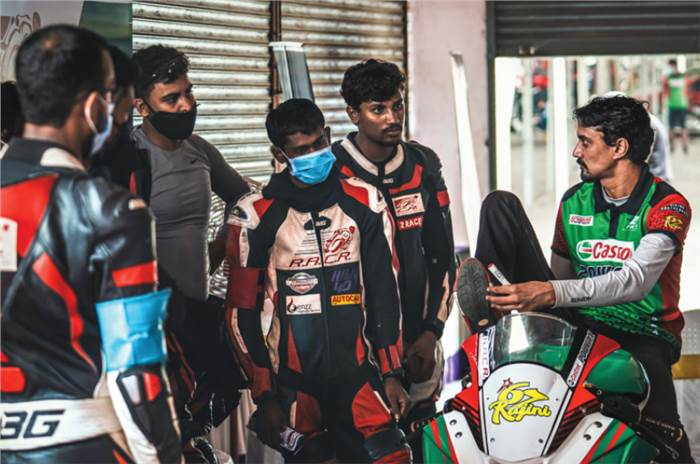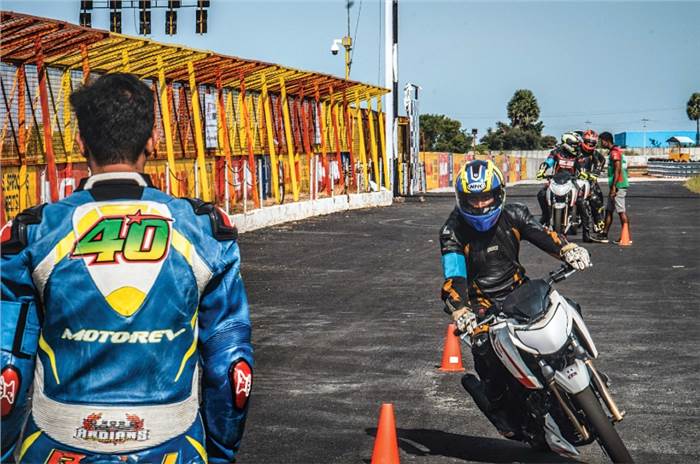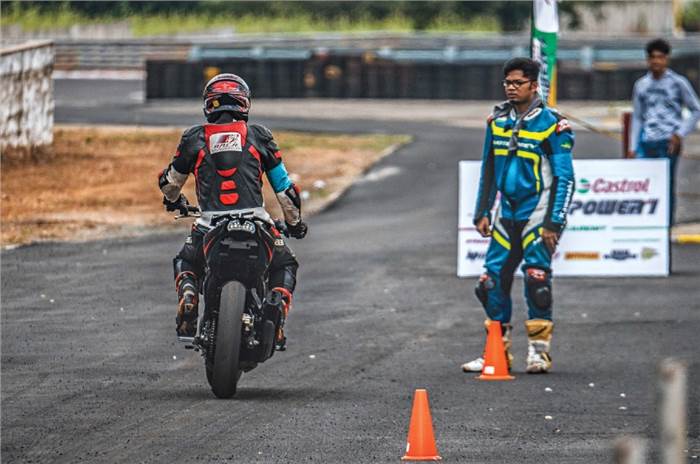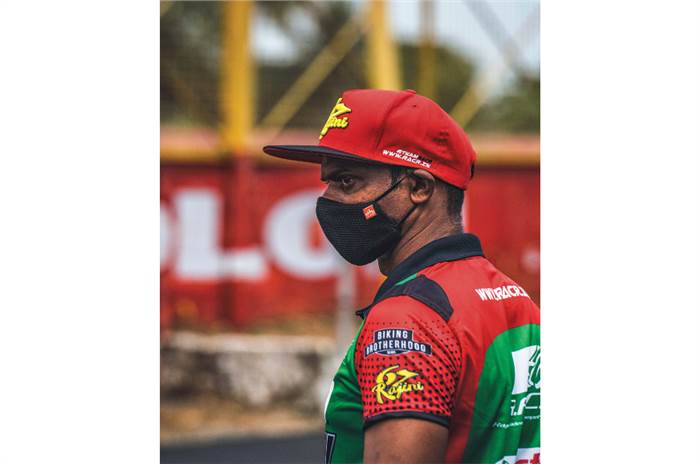Race Ready: Rajini Academy of Competitive Racing
What’s it like learning to race? We report on the Rajini Academy of Competitive Racing.
Published On Dec 30, 2020 08:00:00 AM
17,883 Views
Follow us onStart talking motorcycles with me and five minutes into the conversation, I will start selling you the merits of attending a certified track school. It doesn’t matter where or what you ride, or how skilled you already are, get yourself on a racetrack and you’re likely to end the day a better rider.
There are a few options for the schools you can attend, and the number’s only grown over the last few years. I’ve had the opportunity to attend a couple of them, but it’s been over three years since the last one, and countless hours on our streets invariably force you to pick up some less than ideal habits. So, when the Rajini Academy of Competitive Racing (RACR) invited us to the Kari Motor Speedway to attend their programme, I was looking forward to heading to the track and dusting the cobwebs off.

The academy programme takes place multiple times a year, across all three tracks in India – Kari Motor Speedway in Coimbatore, the Madras Motor Race Track in Chennai and the Buddh International Circuit. I was particularly excited about this one because it was going to be my first time riding on the recently redone track layout (more on page 204), and on a proper race-ready motorcycle.
FIRST THINGS FIRST
This two-day session is split into three levels that progressively get more track-oriented with what they cover. At RACR, Level 1 and Level 2 cram in all the fundamentals you’ll need to ride on a racetrack, while Level 3 focuses on polishing what you’ve learnt, with the help of one-on-one coaching and on-board footage. For all levels, the sessions are divided into theory in the “classroom”, followed by subsequent on-track sessions where you put into practice what you have just learnt.
You have the option to attend all three levels at once or just the first two (like I did), and come back later for Level 3. In my opinion, the latter makes more sense because you can take back what you’ve learnt, and over an open track session or two, understand what makes sense to you and what doesn’t, before you come back to the coaches.

The first day starts off pretty slow: you finish your documentation, get your gear and motorcycle sorted, and head into the classroom where you’re divided into batches for the rest of the weekend. Each batch falls under the guidance of a coach, who will be your point of contact for all things two-wheels, over the course of the next few days. This is followed by a quick briefing on the foundational aspects of riding on a track, what the different flags are and what they signify, what to do in case of a crash and how to enter and exit the pit lane safely. Once that’s over, the fun begins.
The first session out on the track is to gather an understanding of the controlled environment that you’re in and get comfortable with your gear and motorcycle. Sadly, the weather gods weren’t kind to us on day 1. We woke up to pouring rain that left us with a very wet racetrack and equally dampened spirits.
SLOW DOWN, GO FASTER
But the sun was out with vigour and shortly after, we were good to head out for our first session on track. On the first day, we covered throttle control, basic and advanced body position, and how to enter, apex and exit a corner. Now, some of these drills may sound rather track-oriented, but you’d be surprised by how useful they are on the street as well. For instance, the throttle can play a significant role in the dynamics of a bike; be smooth with it, and you’ll be much less likely to upset its stability. Body position, too, is key. Mount yourself right on the bike, with your legs gripped to the tank and less pressure on your shoulder and forearms, and you’ll be able to stay comfortable for longer.

The same applied for the drills covered in the second day, which included concepts like two-step braking, how to utilise your peripheral vision, the art of counter-steering, and race starts. The modules of day two were also carried out in the pitlane, where the coaches set up cones for us to work on our braking and countersteering.
To enable you to properly grasp what’s being conveyed, most of the on-track drills have to be carried out in a single gear, and without the use of your brakes! As absurd and counter-intuitive as that sounds, it is quite beneficial as it allows you to focus all your attention on the task at hand without having to worry about slowing down rapidly or shifting gears. You’re also prohibited from passing the rider in front of you. This nipped my desire to go flat-out in the bud, and left me a little frustrated, at first. But, as I started to carry out the drills along with the rest of my batch, I realised that a lot of my actions on track didn’t come as naturally to me as they once did. I found that I wasn’t looking as far ahead as I should be and as a result, I was reacting to what was happening rather than anticipating and preparing for what was ahead. My body position was a little rusty as well, and so I slowed down, suppressed the urge to aimlessly go fast, and focused solely on improving those two aspects.
And that’s what any certified track school enables you to do. Under the right guidance, it can help you fix the little chinks in your repertoire of skills.
DREAM TEAM
The guidance at RACR comes from some of the most talented racers in our country. The man at the helm, Rajini Krishnan, needs no introduction and is arguably the most successful motorcycle racer India has produced. In fact, all the coaches at the academy are names at the very pinnacle of the sport in India – Jagan Kumar, Deepak Ravikumar, Sarath Kumar and Vishwadev Muraleedharan, to name a few.

On my time at the track, Rajini had taken on more of an administrative role, scootering around and letting the students know what was next, helping the odd student buckle their helmet or zip up their suit and just making sure everything went smoothly. But he continues to be one of the most approachable people on the racetrack and will be more than happy to answer any questions you may have.
TRACK-BRED
Like I said, a school at a racetrack is one of the best places for you to hone your riding skills. The costs of attending one may be high, but the payoff is worth it if, like me, you spend a lot of time on a motorcycle (or thinking of the next time you’ll be on one).

RACR is open to riders of all skill levels, to anyone over the age of just 11 and depending on which track it’s being conducted at, it’s also accommodating of any motorcycle upwards of 150-200cc. You also have the option to rent riding gear, or a motorcycle, which in our case was a race-prepped Kawasaki Ninja 300 (more on that in another story), or a track-spec TVS Apache RTR 200 4V.
Apart from the fact that you’ll leave a better rider, attending all three levels at RACR will grant you a certificate that enables you to apply for a domestic race license. This academy is one you should consider, especially if you’re serious about racing, but also if you just want to be a safer and better rider.
Also see:
Copyright (c) Autocar India. All rights reserved.




Comments
Member Login
Personal Details
No comments yet. Be the first to comment.